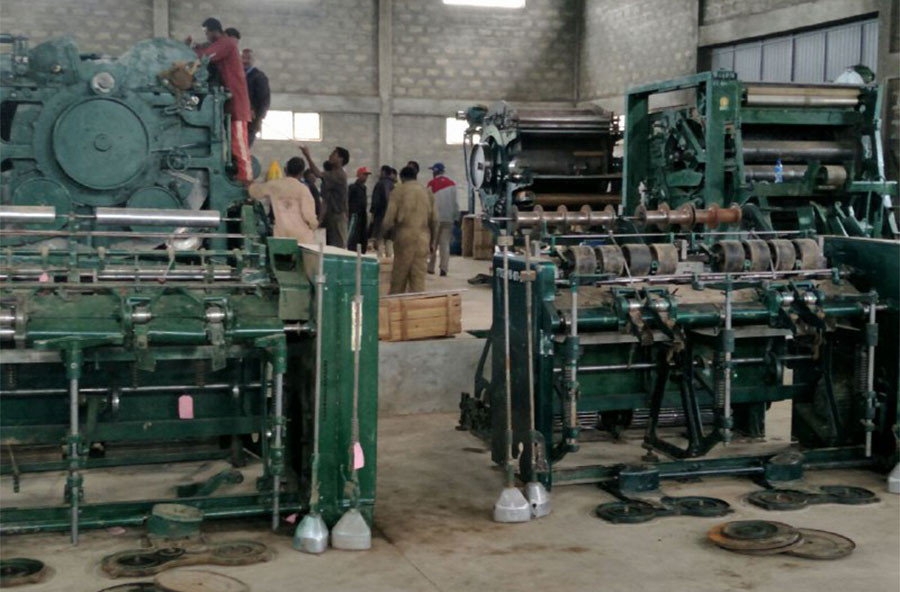
Radar | Mar 18,2023
Cooperative Bank of Oromia (CBO), one of the mid-aged banks, registered the highest profit growth rate in the industry over the last fiscal year, recording a 79.6pc growth compared with the past fiscal year.
The Bank netted 1.2 billion Br in profit, making it one of the top three most profitable private banks in the country following Awash and Dashen banks, which made 2.6 billion Br and 1.5 billion Br in profits last year, respectively.
Parallel to its profit, Cooperative Bank's earnings per share (EPS), the profit divided by the total outstanding number of shares, also grew significantly to 47pc, a sharp jump from 36pc.
The profit and EPS growth of the Bank is awe-inspiring, according to Abdulmenan Mohammed, a financial statement analyst with close to two decades of experience.
"The Bank's performance is as high as the oldest private banks," he said. "The management should be applauded for such a remarkable performance."
CBO’s EPS snowballed, while its paid-up capital also surged significantly to three billion Birr, marking a 42.9pc growth. At most financial institutions, the two go in opposite directions.
Achieving a high level of EPS while increasing the paid-up capital significantly is impressive, according to Abdulmenan.
Last year was shaped by a series of the external and industry challenges that have affected the overall macroeconomy and the Bank's growth momentum, according to Fikru Deksisa (PhD), chairperson of the board of directors of the Bank.
"Despite the fact that these external factors severely affected the performance of the banking industry and our Bank, in particular, it was a defining year for the Bank during which an incredible performance unfolded," he remarked.
The Bank has been following expansionary growth over the past three years, according to Deribe Asfaw, CEO of the Bank, who explained that it has followed a "min-max" and turnaround strategy to steer the Bank over the challenges it had been facing.
"We've been investing over the past three years, and we're reaping the fruit," he told Fortune. "It's all about earning assets."
The growth in profit after tax was mainly driven by both financial and non-financial intermediation revenues expansion. The Bank’s interest income soared by 48pc to 4.2 billion Br, fees and commissions surged by 40pc to 762.8 million Br, while gains on foreign exchange climbed by 121pc 536.3 million Br.
Increased expenses accompanied a considerable expansion in income. Interest expenses soared by 47.6pc to 1.5 billion Br, salaries and benefits increased by 13.7pc to 1.1 billion Br. Other operating expenses exploded by 69.8pc to 1.4 billion Br.
The Bank's expense-to-income ratio stood at 75.3pc, a marginal decline from the 79pc registered last year.
That year the Bank opened 31 new branches, putting the total number of branches at 420. Its total employee count also reached 8,163, a two percent growth from the preceding year.
In the last fiscal year, provision for impairment of loans and other assets of the Bank rose by 332.4pc to 153.5 million Br.
This may have been related to a surge in lending activities, according to the expert.
"The CBO has been repeatedly hit by a surge in doubtful loans and advances," he said. "This area is the weak spot of the Bank, which should be addressed by an appropriate credit risk management mechanism."
It is directly related to the impact of COVID-19, according to Deribe.
"There were many companies that have been struggling to pay debts," he said. "Due to the pandemic, we fully removed interest rates for borrowers from the hotel industry, and we cut the loan interest rate for other borrowers, which is still active."
The Bank's total assets increased massively by 25.6pc to 52.5 billion Br. Loans and advances similarly surged by 40pc to 34.2 billion Br. The total deposits of the Bank reached 45.5 billion Br, an increase of 26pc. The loan-to-deposit ratio increased by 10 percentage points to 75.1pc.
The loan-to-deposit ratio of the CBO is at an ideal level, according to the expert.
The Bank's investment in National Bank of Ethiopia (NBE) bonds and treasury bills increased by eight percent to nine billion Br. This investment represents 17pc of its total assets and 19pc of total deposits of the Bank.
Liquidity analysis indicates that the liquidity level of the Bank decreased in value and relative terms. Cash and bank balances decreased by 5.2pc to 6.8 billion Br. The ratio of cash and bank balances to total assets went down by 4.3 percentage points to 13pc, and cash and bank balances to total liabilities decreased to 14.4pc from 18.6pc.
The capital adequacy ratio (CAR) of the Bank increased to 13pc from 12.5pc.
Even though the CAR of Cooperative Bank is higher than the legal minimum, it should consider increasing it for precautionary reasons, according to Abdulmenan.
"We've noticed this as one of our weaknesses," agreed Deribe.
The board and management have decided to have a CAR that considers its asset growth to carry a risk. The Bank's growth strategy is also aimed at boosting the paid-up capital to reach 10 billion Br in three years, according to Deribe.
PUBLISHED ON
Feb 27,2021 [ VOL
21 , NO
1087]

Radar | Mar 18,2023

Radar | Mar 09,2019

Radar | Mar 27,2021

Fortune News | Dec 05,2018

Radar | Mar 27,2021

Dec 22 , 2024 . By TIZITA SHEWAFERAW
Charged with transforming colossal state-owned enterprises into modern and competitiv...

Aug 18 , 2024 . By AKSAH ITALO
Although predictable Yonas Zerihun's job in the ride-hailing service is not immune to...

Jul 28 , 2024 . By TIZITA SHEWAFERAW
Unhabitual, perhaps too many, Samuel Gebreyohannes, 38, used to occasionally enjoy a couple of beers at breakfast. However, he recently swit...

Jul 13 , 2024 . By AKSAH ITALO
Investors who rely on tractors, trucks, and field vehicles for commuting, transporting commodities, and f...

Oct 4 , 2025
Eyob Tekalegn (PhD) had been in the Governor's chair for only weeks when, on Septembe...

Sep 27 , 2025
Four years into an experiment with “shock therapy” in education, the national moo...

Sep 20 , 2025
Getachew Reda's return to the national stage was always going to stir attention. Once...

Sep 13 , 2025
At its launch in Nairobi two years ago, the Africa Climate Summit was billed as the f...